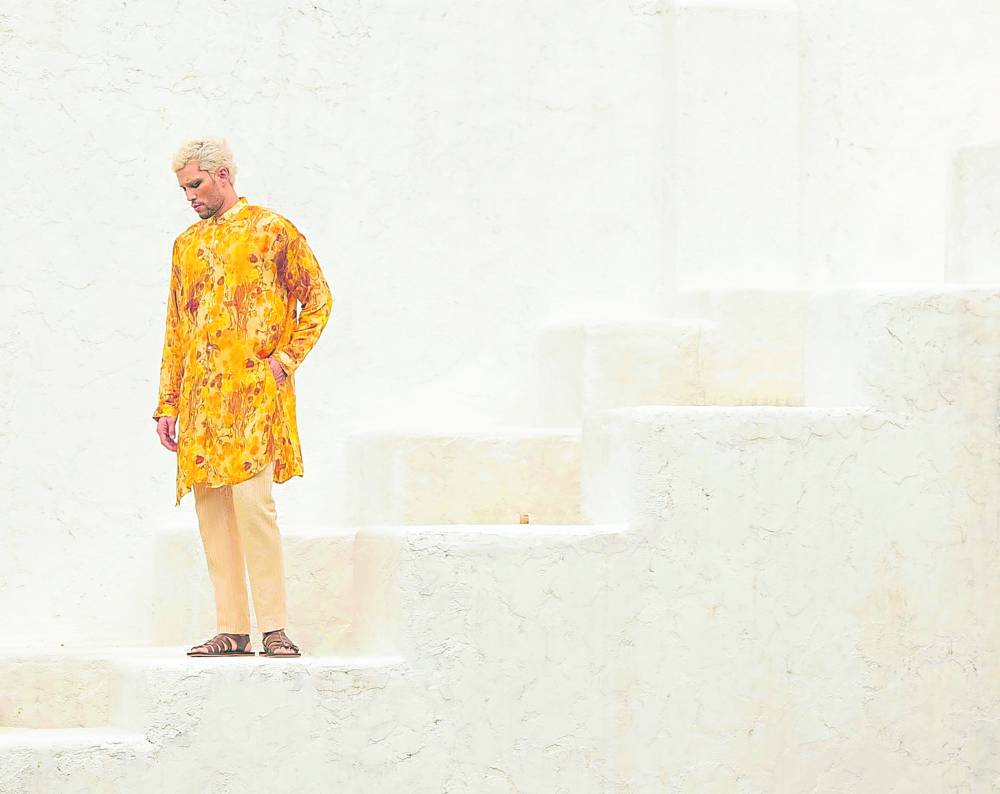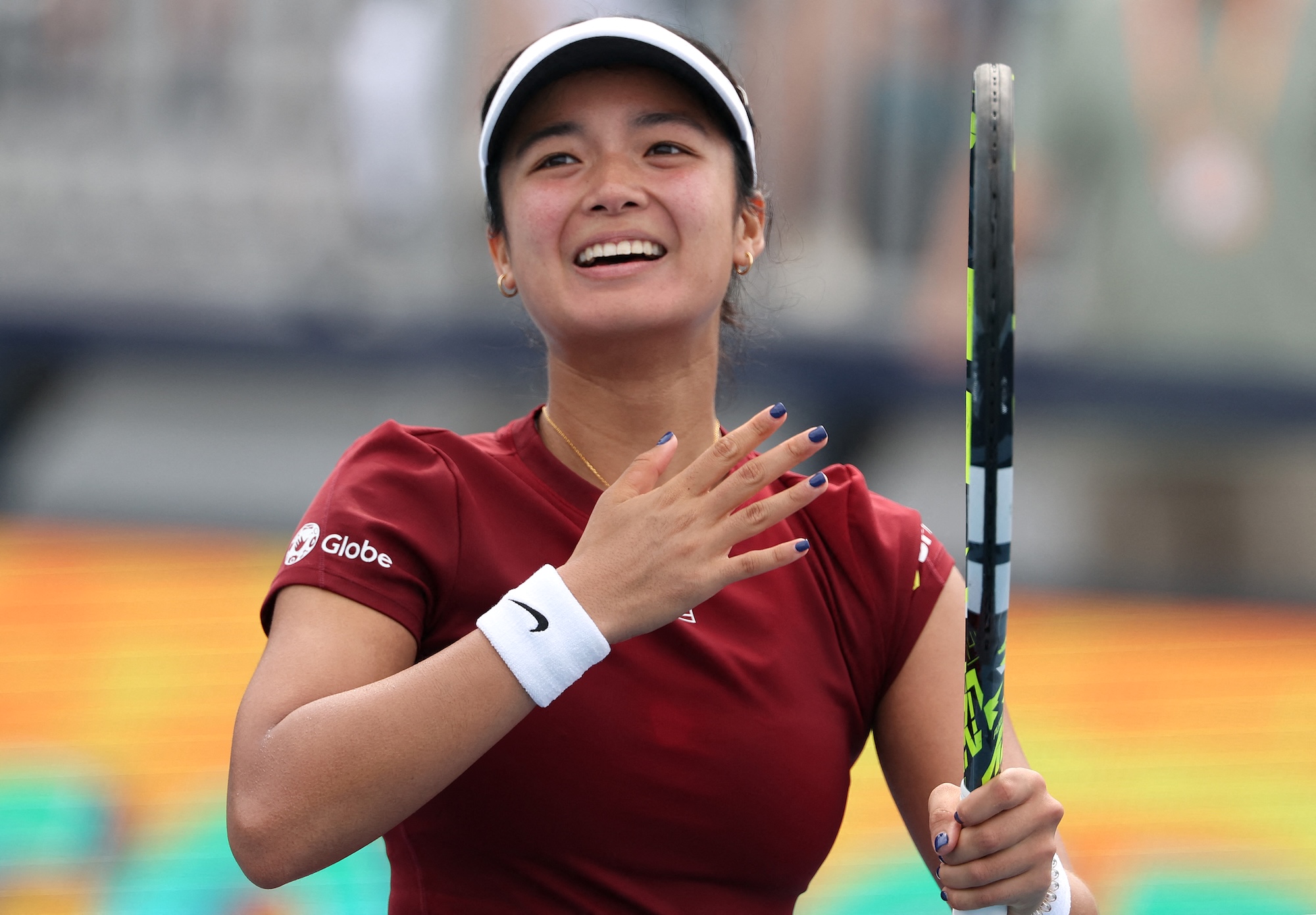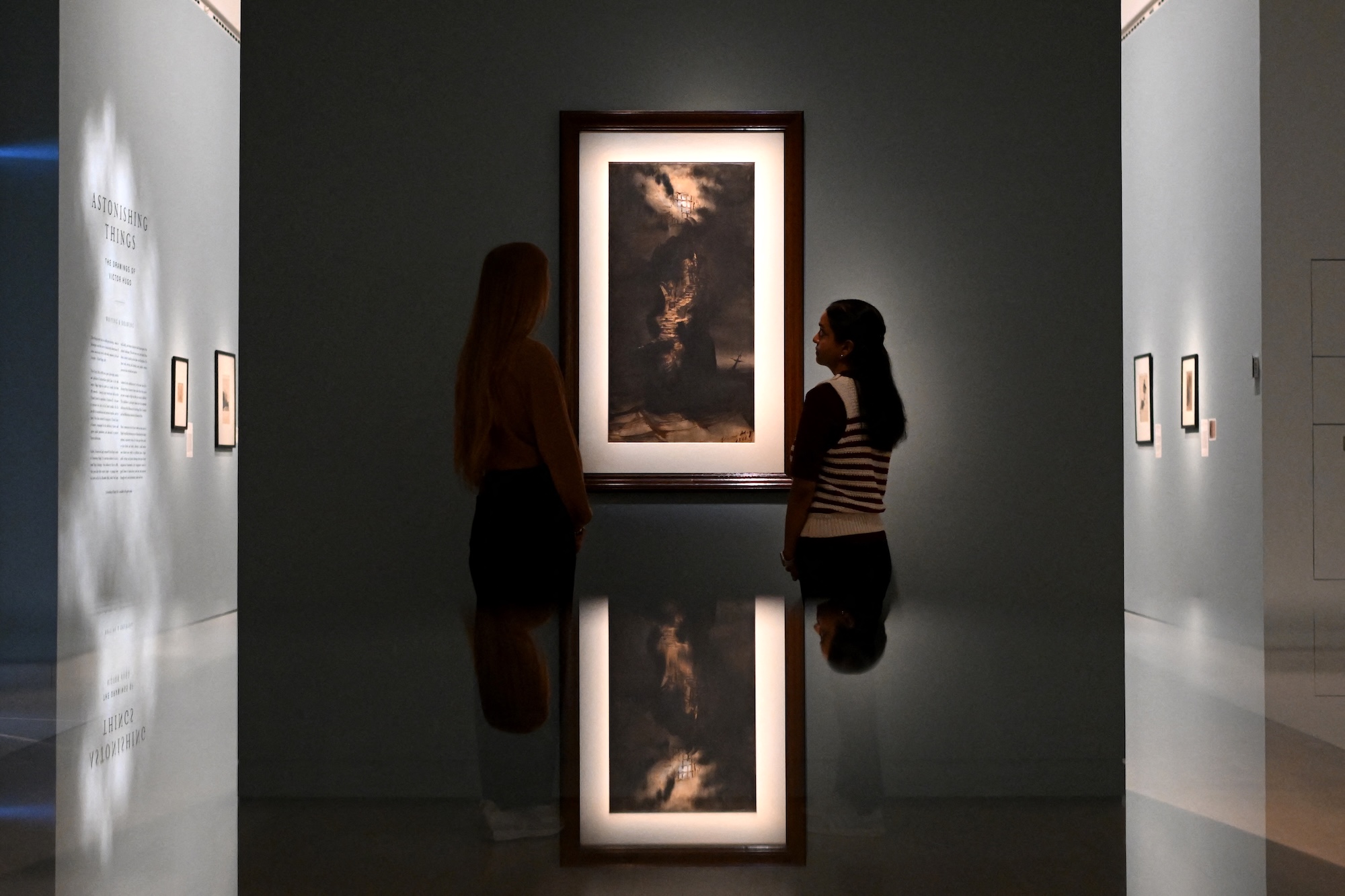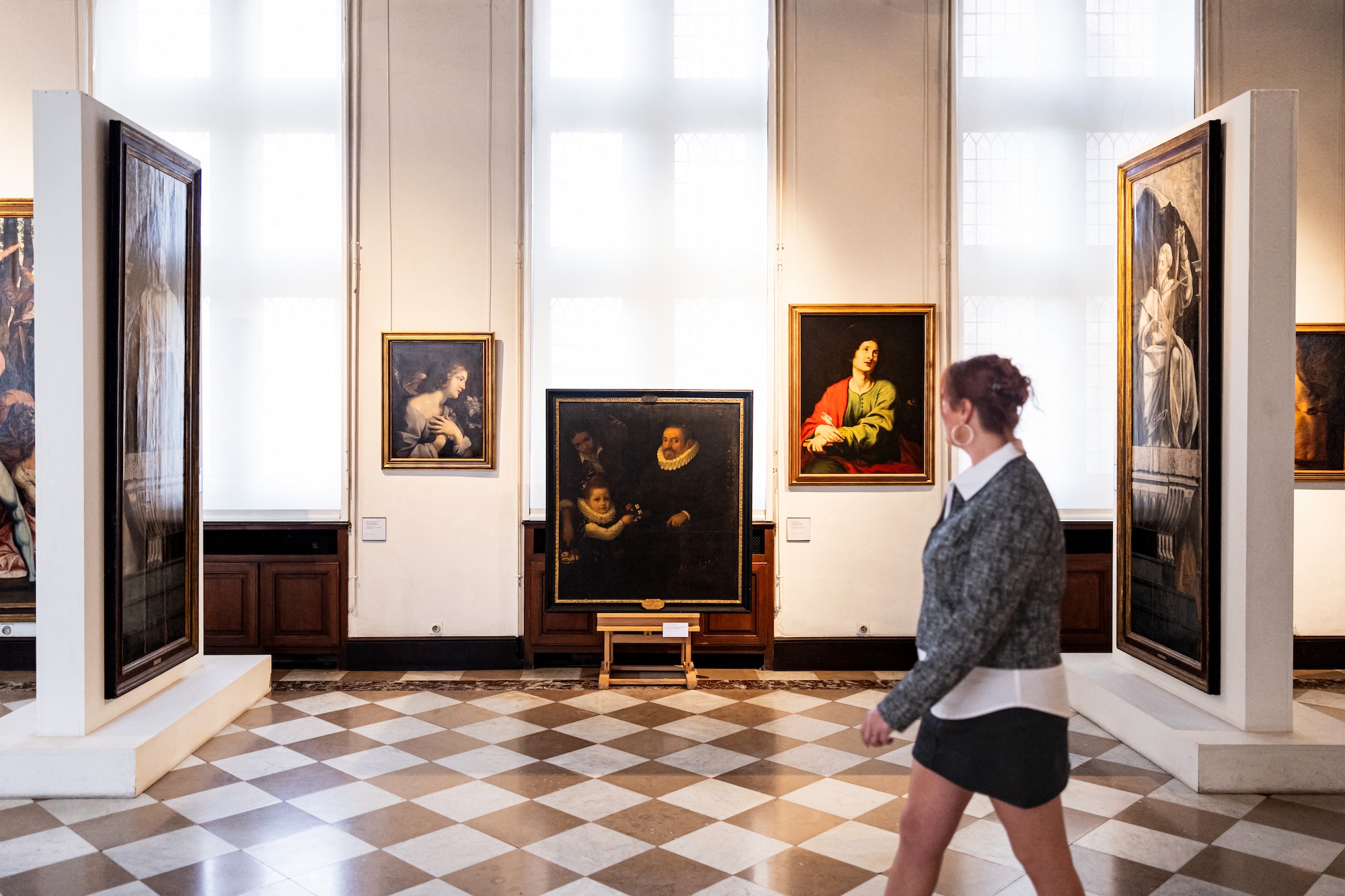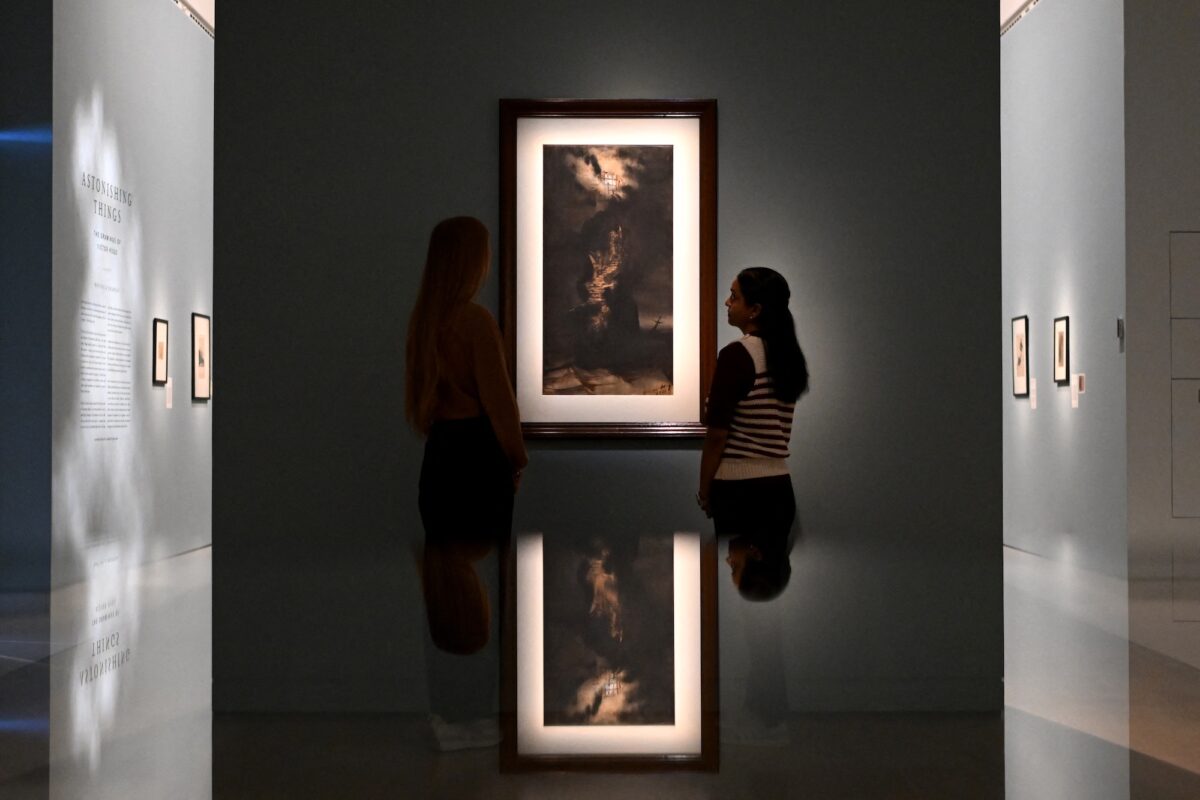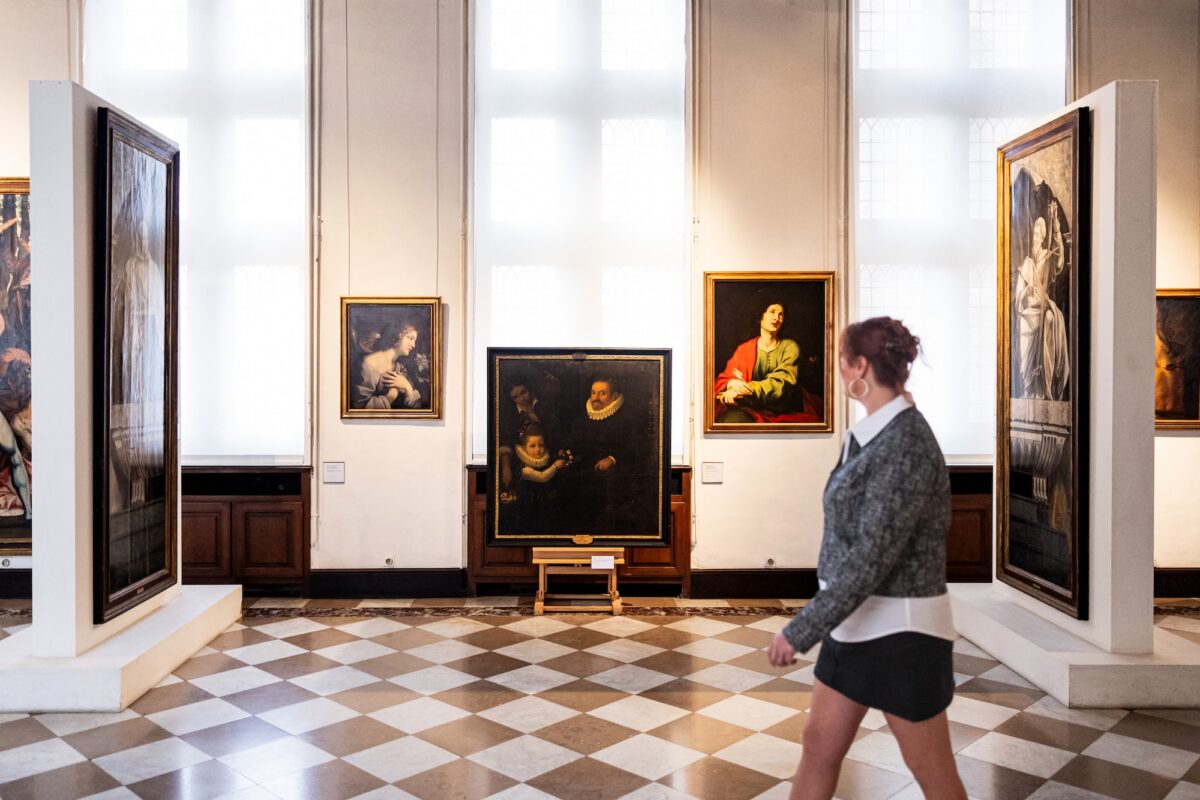Randy Ortiz’s modern kimona with “inabel” embroidered corset and “patadyong” skirt for her and “inabel” patchwork jacket for him for dressy occasions.
Would you go to a party swathed in a mosquitero (mosquito net) or suited up in a woven blanket? Yes, very likely, if the outfit were chic enough and, better yet, designed by Pepito Albert, Randy Ortiz, JC Buendia, Tonichi Nocom or Vic Barba.
Art patron/neurologist Dr. Joven Cuanang has gone to great lengths to resuscitate cotton production and the weaving industry in Pinili, a coastal municipality in Ilocos Norte. In a bid to promote Ilocano cotton by stimulating patronage of Philippine fashion utilizing cotton gauze normally used for mosquito nets and the traditional woven textile inabel, he has put together a unique salon show titled “Algodon” (Spanish for cotton). The show is set at Cuanang’s Pinto Gallery in Antipolo, Rizal, on Feb. 5, and will headline the five designers collectively known as Sunday Sizzlers. Albert, Ortiz, Buendia, Nocom and Barba are interpreting the fiber-to-fabric concept using textiles provided, at Cuanang’s prompting, by the cotton growers and inabel weavers of Pinili, and with the assistance of several supportive institutions. Continuing hope
In Cuanang’s native Ilocos Norte, cotton is woven into fabric described as inabel, referring to specific techniques performed on ancient handlooms and handed down through generations. The distinctive product is used to create mostly items for the home, including blankets and mosquito nets. Cuanang discovered in 2016 that the weaving tradition was on the wane when he visited master textile weaver Magdalena Gamayo in Pinili. Four years earlier, Gamayo received the Gawad sa Manlilikha ng Bayan award from the National Commission for Culture and the Arts, which cited her as “a living treasure, for preserving a dying tradition.”
From weavers, Cuanang learned that they had been using polyester threads from China because cotton threads were scarce. Most of the farmers had turned to growing tobacco, which guaranteed bigger yields and more earnings.
To convince them to revert to cotton, Cuanang shelled out P30,000 for a water pump for irrigation. With help from the Philippine Fiber Industry Development Authority (PhilFida), the farmers proceeded to plant cotton seeds on two hectares of land. The harvest was initially processed into cotton threads in Taguig. Cuanang and the Pinili LGU then bought more looms for the weavers.
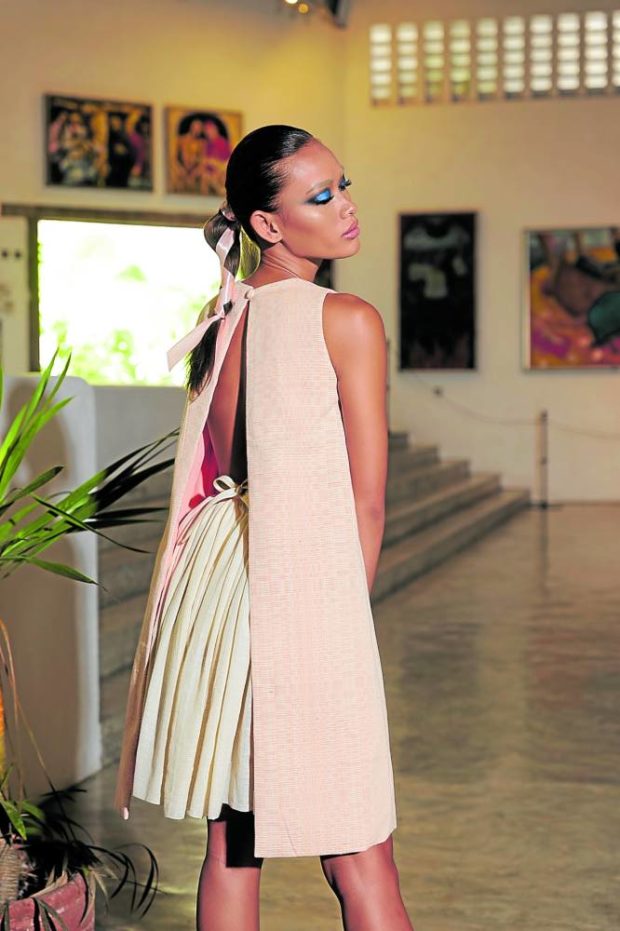
Sen. Loren Legarda, an advocate for cultural tradition, helped secure funds for PhilFida to set up the Ilocos Cotton Processing Center in Barangay Lumbaan, Pinili. In 2021, President Rodrigo Duterte tapped the National Irrigation Authority for a P30-million donation with which to build a solar-powered irrigation system for the cotton farms, and the Philippine Gaming and Amusement Corp. for P6 million more to shore up operations at the local cotton processing center. An industrial chemist from Mariano Marcos State University helped develop dye fixatives to minimize the bleeding of natural colorants used in the fabrics.
Cuanang’s continuing hope is for more cotton to be produced and processed into threads of fashionable colors that would then be made accessible to weavers. He refuses to claim sole credit for the initiative and subsequent strides. With the help of PhilFida, the farmers, weavers and Pinili Mayor Rommel Labasan have set up a cooperative to plant more cotton. “We seek to help them further by marketing the end products,” Cuanang said. “Since the fashion show will highlight local cotton instead of the inabel variety woven with polyester, we could hopefully make inroads into a new market.”
Perfect timing
It was fortuitous that the Sunday Sizzlers had wanted for some time to embark on a worthy cause.“When the designers and I discussed the concept with Dr. Cuanang, the inevitable focus was the commercial viability of inabel and how to translate that into clothing,” said fashion show director Jackie Aquino. In the end, they agreed that each of five separate collections should highlight the individual designer’s strengths and that, for a dash of contemporary flavor, the Ilocos cotton would be combined with other fabrics.
The media-shy Albert demurred from this interview. Suffice it to say that he is no stranger to inabel and, for the salon show, will create clothes that are fluid and graceful. His designs are admired for perfect proportions, construction, beautiful shapes and discreet touches.

Known for menswear, Nocom’s “Algodon” collection ranges from resort attire to evening fashion. He interprets the mosquito net as easy-fitting men’s shirts and cover-ups for resort lounging. The shirts are lightly starched to suggest the nubby texture and fall of linen. The inabel with binakol or kusikus (“whirlwind” circular patterns that evoke Op Art) is fully utilized in drawstring pants, shorts and tops. He throws in playful bra tops and women’s shorts as well. Nocom recommends the crease-free inabel for a travel overcoat which, for evening functions, may be worn stylishly over a matching camisole or glittery outfit.
While Nocom uses traditional inabel browns, blues and black-and-yellow stripes, Buendia ventures into a fashion-forward palette of apricot and beige. Buendia’s collection exudes his characteristic understated elegance. Separates are designed to be snugly coordinated in terms of patterns or colors to easily transition the look from day to night. For example, with a beaded tulle top, a dirndl skirt made of mosquito net is transformed into a cocktail number.
A departure from earth colors, inabel in apricot is fashioned into an A-line dress coat with a peek-a-boo back. It can be worn with any skirt or pair of pants. The kulambo lends its softness to pared-down poet’s shirts that would be perfect with tailored separates.
“They don’t get to the level of saccharine,” said Buendia. “I’m showing everyday apparel. I’m surprised, in fact, that Gen Z are wearing my clothes, although my icons are Audrey Hepburn and Grace Kelly.”
Decorative needlework
Details such as appliquéd flowers, fastidious beadwork, and embroidered nature patterns are integral to Randy Ortiz’s aesthetic. He modernizes inabel by turning it into decorative needlework. The inabel kusikos is cut into embroidered floral patches or softened with embroidered inserts of piña cutwork fabric. A signature Ortiz look, a softly tailored piña-jusi shirt, is paired with an inabel peplum corset.

“I’m more into embroidery than patterns,” the designer said. “The lace on the inabel bustier is totally handmade. We embellished it with organdy flowers.”
In this collection, inabel is also transformed into versatile separates, such as a shrug and pleat-front pants. For his menswear, Ortiz uses the featured fabric for patchwork or as accent side stripes on linen pants.
Working with indigenous woven fabrics is challenging. His inabel suit retains its shape with the help of fusible interfacing, strips that stabilize the fabric and hold the patterns together.
Ortiz added, “When you say ‘Filipino,’ it doesn’t have to be literal. You can simply use that as inspiration.”
Graphic possibilities
Barba, the pret-a-porter brand, is making a statement with the kusikos pattern, which expresses the designer’s spirited style. “The binakul or kusikos evokes that playful ‘60s vibe,” explained Barba, who is the only designer in this batch who has a store, X in Glorietta 4. “I toyed with the graphic possibilities of inabel, even making cutouts such as huge poppies with sequins.”
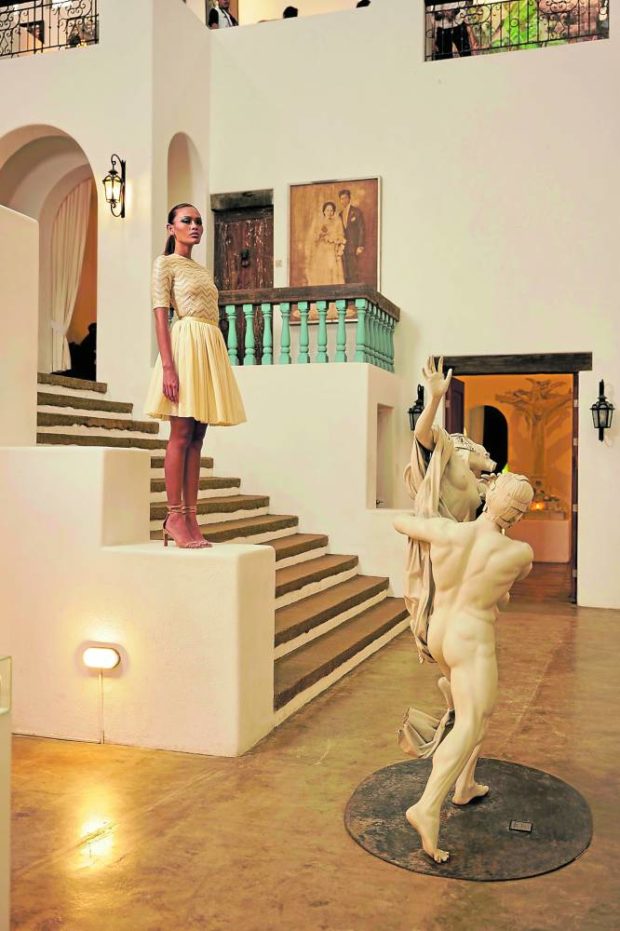
His black mesh hoodie shirt is embroidered with appliquéd numbers in inabel. It works equally well as a man’s shirt or a woman’s beach cover-up, or a tunic top. His inabel hoodie with red ribbed edges can double as an oversized shirt for men, or a bubble dress for women.
The Barba brand inabel front on a dress is contrasted with soft fabric on the back. Then there’s an inabel lab spring coat, a cream-colored bomber jacket and, from the remnants, bangles.
The piece de resistance is a strapless evening dress with frayed bias strips of kulambo hand-stitched around it. “That’s couture,” declared the designer. “When you’re handling material like a mosquito net, you find ways to make it work.”
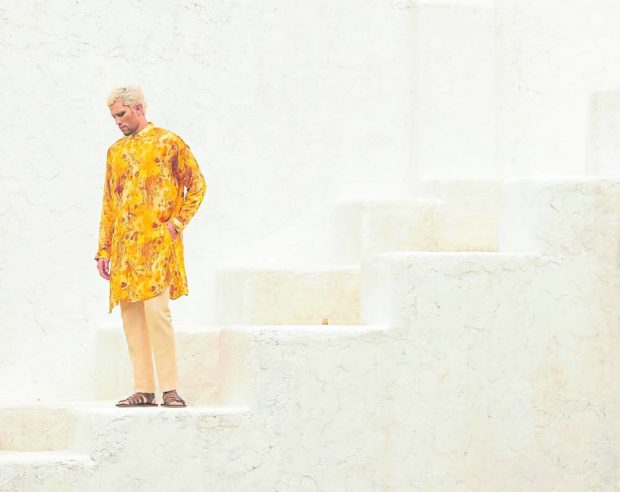
Models: Yaofa dela Cruz, Leila Ibanez, Isabela Galeria, Philippe Magalona, Vince Marcelo
Hair/makeup team: Jayson Ocampo Santos, Cloe Javier, Alec Valenzuela

